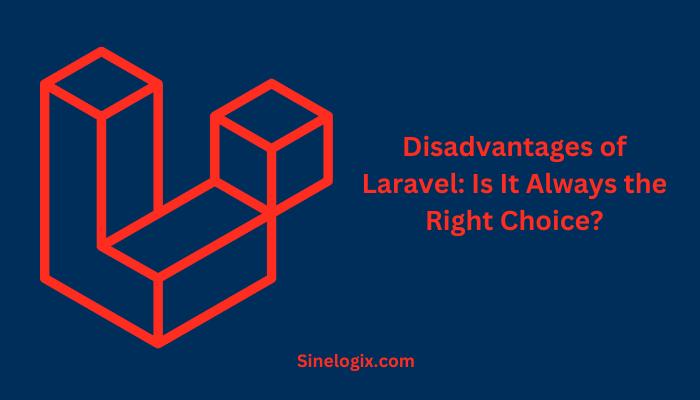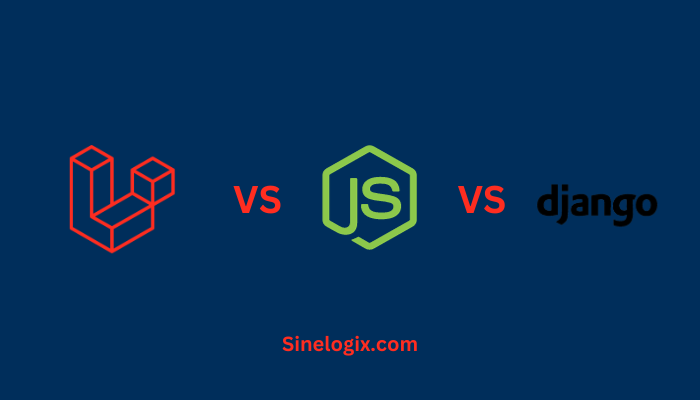Laravel, a robust PHP framework, has garnered immense popularity in the web development community over the years.
Known for its elegant syntax and wide range of features, it has become a go-to choice for developers working on web applications. However, like any tool, Laravel is not without its drawbacks.
In this comprehensive guide, we’ll explore 7 Laravel disadvantages that every developer should consider when deciding if this framework aligns with their project’s needs.
1. Learning Curve
The steep learning curve of Laravel can be a significant challenge, especially for newcomers to PHP frameworks or MVC (Model-View-Controller) architecture. While Laravel’s extensive documentation is an asset, the framework’s rich feature set and intricate concepts can be overwhelming.
For developers accustomed to procedural programming or those new to web development, grasping concepts like routing, middleware, Eloquent ORM, and Blade templating can be a formidable task.
However, it’s worth noting that the learning curve can be seen as an investment.
Once developers become familiar with Laravel’s conventions and features, they can benefit from increased productivity and the framework’s built-in tools for tasks such as authentication, database interactions, and routing.
However, the initial learning hurdle can be a deterrent for projects with tight deadlines or those requiring rapid development without the learning curve.
2. Performance Overhead
While Laravel offers an array of features that simplify development, this convenience sometimes comes at the cost of performance.
The framework’s extensive abstractions, middleware pipeline, and various components can introduce performance overhead, particularly when compared to leaner, micro-frameworks or custom-built solutions.
To mitigate this issue, developers must focus on optimizing their Laravel applications. Techniques like query optimization, caching, and efficient use of middleware can help improve performance.
However, achieving optimal performance may require a deep understanding of Laravel’s internals, and developers may need to balance ease of development with performance considerations.
3. Frequent Updates
Laravel’s active development community is a testament to its popularity, but it can also lead to a disadvantage: frequent updates.
While regular updates are essential for security, bug fixes, and the addition of new features, they can pose challenges for projects that prioritize stability and continuity.
Each update introduces the potential for breaking changes or backward compatibility issues. Developers must carefully plan and manage updates to ensure that their existing codebase remains functional.
This can add an extra layer of complexity and maintenance overhead, especially for projects with long-term support requirements.
4. Complex Configuration
As Laravel applications grow in complexity, managing configuration files can become an intricate task. Laravel uses configuration files for various aspects of an application, from database settings to mail drivers and third-party service integrations.
While this modularity can be beneficial for organizing settings, it can also lead to numerous configuration files, each with its own set of parameters.
Maintaining and version-controlling these configuration files can become challenging, especially for large teams working on complex applications.
Careful organization and documentation are essential to prevent configuration-related issues, such as misconfigured database connections or API credentials.
5. Scalability Challenges
Laravel shines in the realm of small to medium-sized applications, offering a feature-rich environment for rapid development.
However, when it comes to scaling applications to handle high-traffic or resource-intensive workloads, Laravel may encounter challenges.
Scaling Laravel applications typically requires careful planning and implementing additional tools and strategies. Developers may need to consider solutions like load balancing, caching, and database sharding to ensure optimal performance and scalability.
While these challenges are not insurmountable, they highlight the importance of evaluating Laravel’s suitability for the specific scalability requirements of a project.
6. Limited Performance Optimization Control
Laravel’s focus on developer convenience and best practices can sometimes limit the degree of control developers have over performance optimization.
The framework abstracts many low-level details to simplify development, which can be advantageous for productivity but may hinder developers who require fine-grained control over their application’s performance.
For projects with unique performance optimization requirements or specific use cases, Laravel’s abstractions may not provide the level of control needed to achieve optimal results.
Developers may find themselves working around Laravel’s conventions to implement custom optimization strategies, potentially adding complexity to their codebase.
7. Dependency on Composer
Laravel relies extensively on Composer, a PHP package manager, for managing dependencies and autoloading classes.
While Composer is a powerful tool that simplifies dependency management, it can also introduce challenges, such as dependency conflicts and version compatibility issues.
Managing dependencies effectively is crucial to prevent conflicts and ensure the smooth functioning of Laravel applications.
This requires ongoing attention to the project’s composer.json file, regular updates, and thorough testing to identify and resolve any compatibility issues that may arise.
Related Articles:
- Advantages of Laravel
- How to Setup Laravel?
Conclusion
Laravel undeniably stands as a powerful PHP framework, cherished by countless developers for its elegance and developer-friendly features. However, it’s crucial to acknowledge and assess the disadvantages it carries against the advantages when evaluating it for a project.
Developers should meticulously consider their project requirements, team expertise, and long-term goals before adopting Laravel as their framework of choice.
With a clear understanding of these disadvantages and careful planning, Laravel can still serve as an excellent tool for building web applications that align with your project’s needs.
Balancing its strengths and weaknesses is key to making an informed decision and ensuring a successful development journey.




